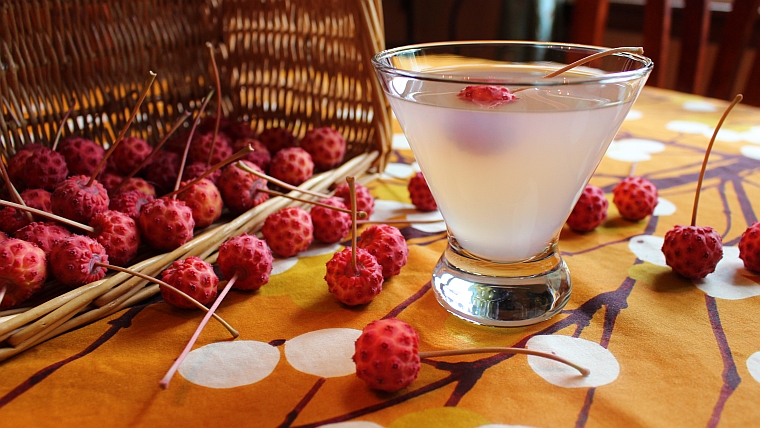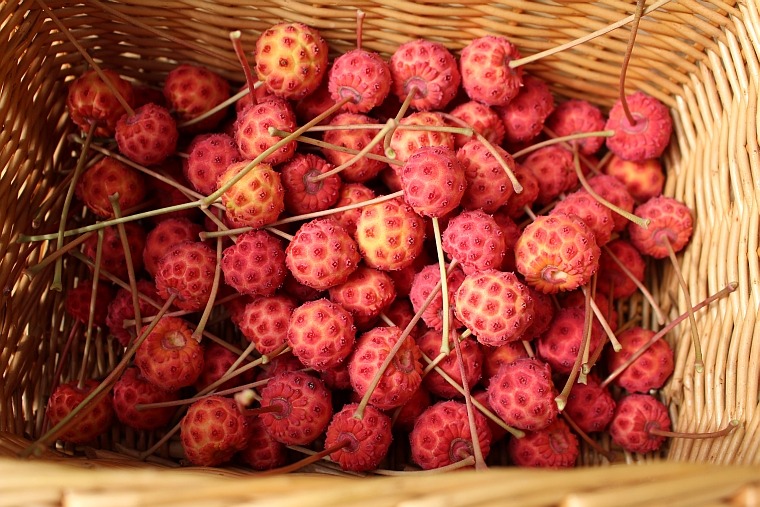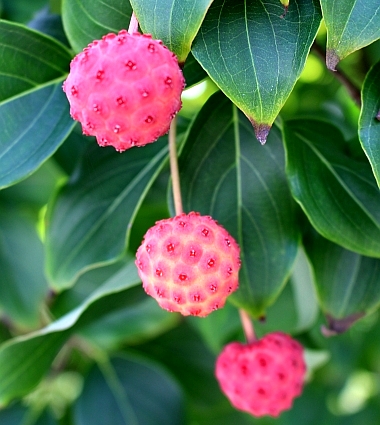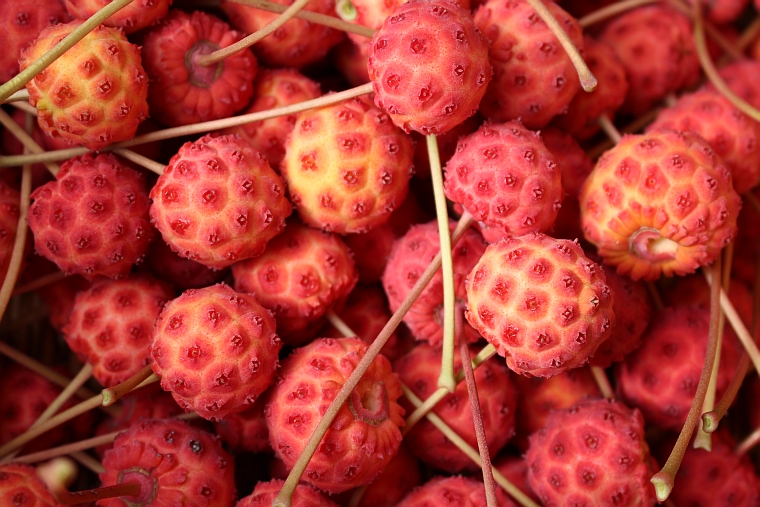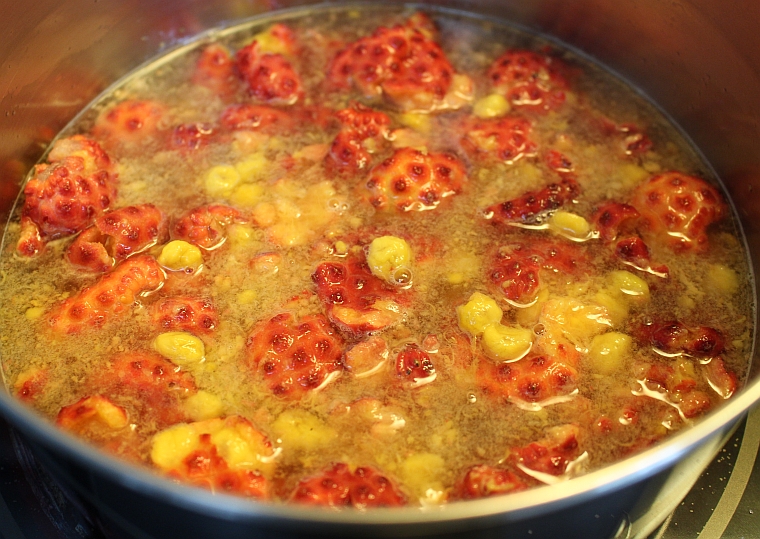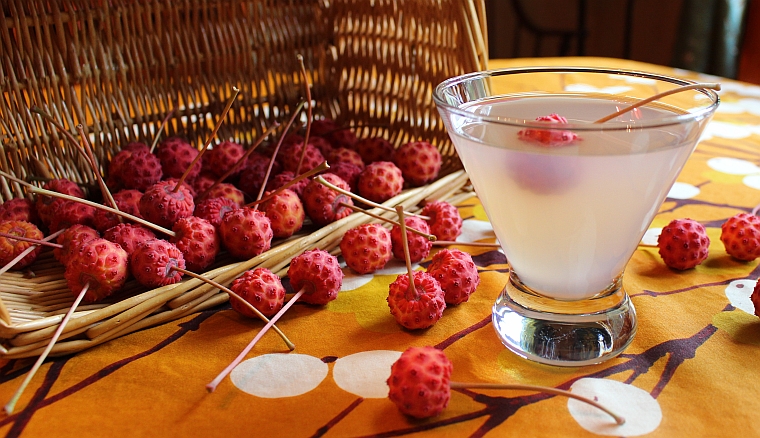The Chinese dogwood is a small tree known mainly for its white flowers (bracts, actually) that show up, perfectly-timed, just after the American dogwood finishes blooming. It’s on the late side of the spring bloomers, lingering into June and holding up well even in that first flush of hot days. It also makes an excellent cut flower – a branch or two can make a sculptural arrangement with the slightest effort.
Less-known is the charm of the fruits that eventually follow the flowers of the dogwood. They start out small and green, before maturing into a strawberry-looking fruit that marks a second, if less-showy, period of interest. This fruit has been reaching its peak over the last week or so, and the tree is once again a show-piece of the garden. Given that this was a banner year for dogwood blooms, the fruit was also excessive, so I did a little research to determine if something could be made with them.
Surprisingly, not many bother with the dogwood fruit, and after tasting one I can see why. The skin is tough. The pits (about two or three per fruit) are hard. The flesh of the fruit, while blandly sweet (a cross between an apricot and a raspberry, with much less flavor) is mealy, its texture at first decent before breaking quickly down into something more difficult to chew – and none of it worth the trouble of the rough exterior and the bothersome seeds. From most indications, the only viable option for the fruit – for it is plentiful in its production – is a jam or jelly, when it has been boiled down and macerated enough to elicit the bit of flavor it holds, and to amend it with copious amounts of sugar and spice. I’m in no way capable of making a jam or jelly – certainly not one that requires sterilization of jars or that whole nonsensical scene – but I can do a simple syrup, say, for a cocktail. In fact, it-s a specialty.
For this one, I boiled one part sugar to one part water (a true simple syrup doubles the amount of sugar, but I abhor too much sweetness) and then simply squeezed the fruit out of its shell, dumping the whole mess into the simmering water. I kept boiling time to only about ten minutes, as the flavor seemed to take a slightly off-turn the longer it went, then I let it cool and strained it through a sieve before refrigerating for an hour or two.
For the cocktail, I kept things exceedingly basic, choosing a base of Bulldog gin – a birthday gift from my boss – and just the slightest bit of dogwood syrup, strained through a paper towel to keep things clean. (I’m still reluctant to embrace the heavily-colloidal suspension so many muddled drinks result in.)
Garnished with one of the fruit pieces, it looks slightly better than it tastes. Don’t get me wrong, in desperate times or for something different to try just to say you’ve tried it, this is a neat thing. And any time you can make something with ingredients from the front yard it’s worth an attempt. Once, though, was enough. And vodka may have been the better choice in the end. (To be honest, I had the most fun picking the berries off the tree than any of the other steps – including drinking it – and that’s rare.)
Back to Blog
